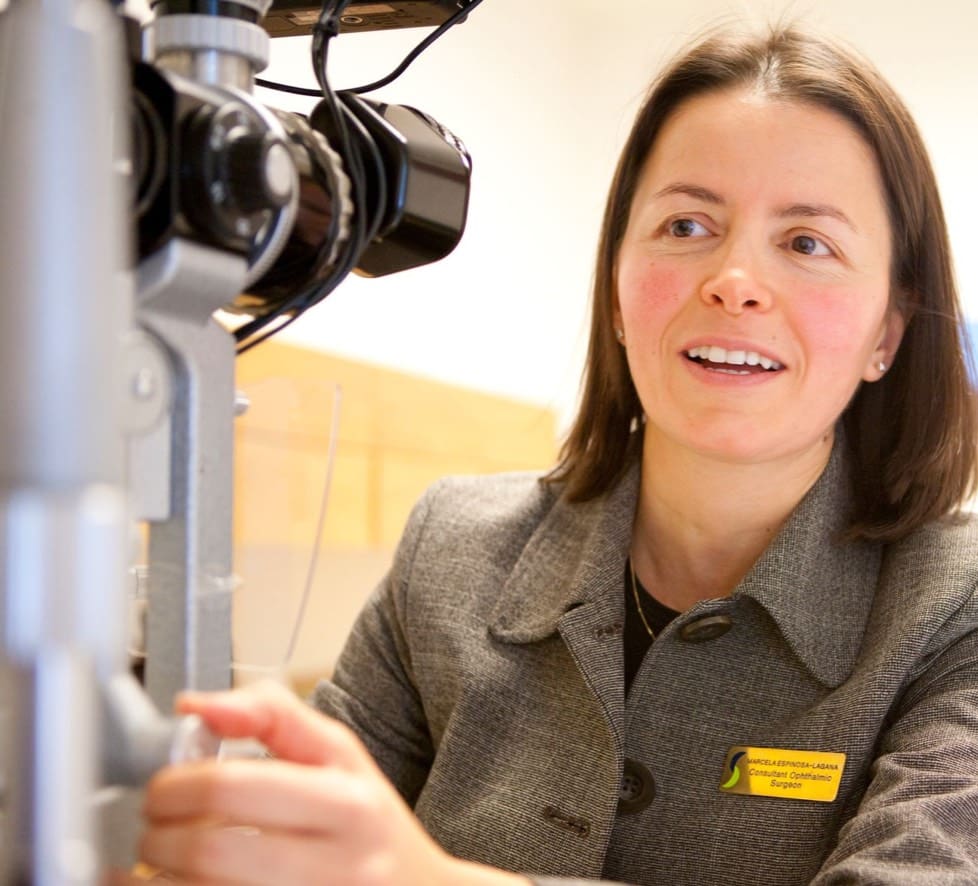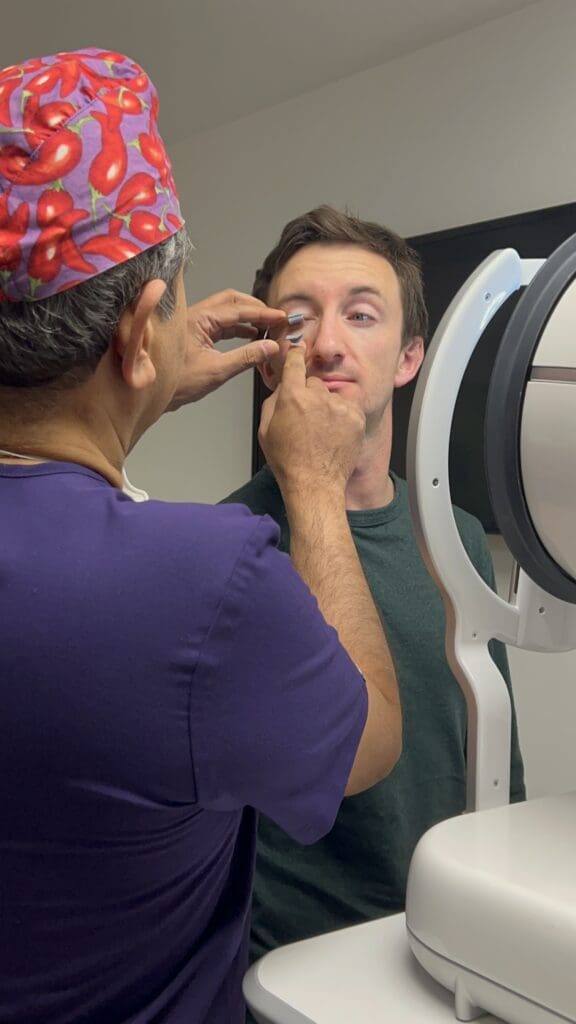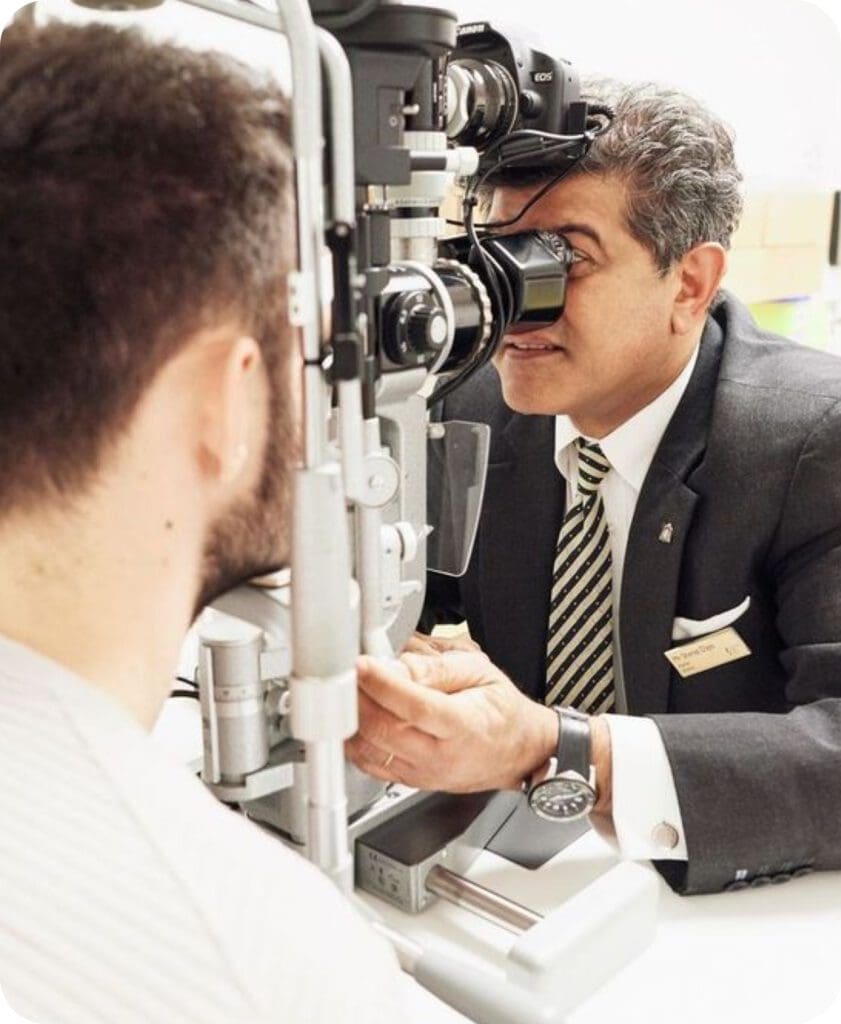A thorough consultation is required if there is any suspicion that you might have glaucoma. The examination involves measuring the intraocular pressure (IOP) as well as evaluation of the optic nerve, specifically the cup/disk ratio which provides an indication if there has been any damage.
Specific investigations are performed and includes a Visual field Test and an Ocular Coherence Tomographic (OCT) evaluation of the Retinal Nerve Fibre Layer (RNFL).
The visual field test is checked on a sophisticated machine that using patient feedback measures the the peripheral vision. Subtle changes can be picked up and monitored over time.
A RNFL OCT measures the thickness of the nerve fibre layer surrounding the optic disc. Nerve damage results in loss of nerve fibre layer thickness. Again the areas of damage which often match up with the visual field can be documented and followed over time.



